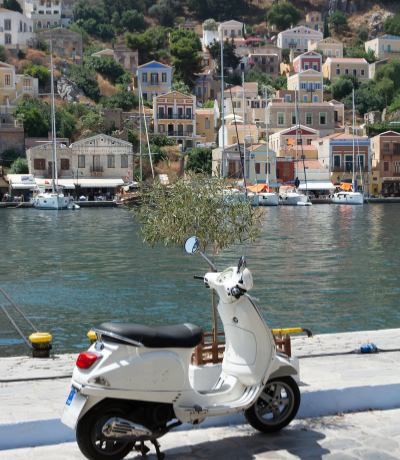Most Dangerous Tourist Vehicles
13 October 2021
What are the most dangerous tourist vehicles?
When you travel to non US countries, you are facing a wide range of vehicles on and in which you can ride to get from here to there. While cars and vans are highly popular in the US, countries with low- to middle-income status have a much higher proportion of pedestrian traffic as well as cyclists using motorized and non motorized two- and three-wheel vehicles than high-income countries.
In most of Africa, for example, walking and non motorized cycling are the primary forms of mobility for much of the population. In Southeast Asia and Western Pacific countries, motorcycles are frequently used because they are cheap to buy and operate.
According to the World Health Organization 2013 Global Status Report on Road Safety, the following is the breakdown of road traffic deaths by type of vehicle and region.
Motorcycles
Motorcycle riders are particularly vulnerable to injuries due to a simple fact: they have no surrounding protection when compared to a standard car with seat belts, bodywork, and crumple zones. According to Dying to Ride 2010 statistics, approximately 80% of all motorcycle crashes result in injury or death – the comparable figure for car crashes is approximately 20%.
Recent statistics in Europe indicate that nearly 70% of all motorcycle crashes involve a car, lorry, or bus.
Mopeds and Scooters
In some regions of the world, scooters and mopeds are not only more available and cheaper, they are everywhere making these vehicles the easiest way to get around places like Bali. In fact, these motorized vehicles can be rented for as little as $5 per day and tout rarely require customers to have a valid license, be sober or wear a helmet.
According to 2011 statistics from Bali tourism reports, three people die in crashes on average every day – many of them foreign tourists. Every day as many as 300 people are treated in hospitals and healthcare clinics for broken bones, abrasions, and head injuries.

Bicycles
In many countries, traveling by bicycle is highly popular even before the rising popularity of guided bicycle tours. In addition, to combat parking problems and pollution many cities around the globe have retrofitted their roads with cycle lanes. Of course, for low- to middle-income countries cycling is not a transportation choice but the default mode of transportation for those who cannot afford anything else. Laborers, delivery people, and semi-skilled workers all use bicycles and many tourists like to get the street-level experience.
What follows is a city-by-city review of bicycle fatality statistics:
- In 2012, according to India’s National Crime Records Bureau, a total of 168,301 people died on Indian roads including 78 cyclists.
- Between 2003 and 2012, Malmo Sweden, which has a remarkable number of daily bike commuters saw only 16 cyclists killed in accidents.
- Beijing – once a city of bikes – is now host to over 5 million cars. Official statistics have indicated that cyclists were involved in over 10,000 of China’s nearly 68 thousand traffic accidents since 2009.
- Berlin, widely recognized as a cyclist paradise for its clearly marked bike lanes and bike safety laws, saw 15 cyclist deaths in 2012 alone.
- Paris, with a city-wide free bicycle scheme since 2007, is now home to 23,000 free bikes in circulation as well as many private bikes. Despite widespread fear, the number of cyclist accidents between 2007 and 2012 ir relatively low 12 have died and more than 660 injured.
- New York cyclists are widely regarded as having a death wish but cyclist fatalities have been slowly coming down even as bike use has more than tripled since 2000. Fatalities hover between a dozen and two dozen since 2000.
Other Vehicular Dangers for Tourists
Other vehicular dangers tourists regularly face include:
- Riding overloaded ferries and buses
- Riding jetskis – especially without experience or training
- Riding whitewater rafts and kayaks
Of course, globally the automobile still remains the single most dangerous vehicle.
How Your Tourist Ride Relates to Travel Insurance
Coming back around to the risks, it’s important for travelers with travel insurance to read their travel insurance policy documents to understand which vehicles are excluded and which are not.
Specifically, nearly all travel insurance companies exclude any coverage for losses if the traveler is riding a motorcycle, motorbike, or scooter. These vehicles are simply deemed too dangerous to be covered and if you are in an accident while riding a motorcycle through the streets of Bali, neither your medical treatment nor evacuation costs will be covered by your travel insurance plan.
Some plans do allow for coverage for cyclists though. In addition, if you take your bike and check it as luggage on the airplane, it may be covered for baggage loss and delay depending on the plan you choose.
Damian Tysdal is the founder of CoverTrip, and is a licensed agent for travel insurance (MA 1883287). He believes travel insurance should be easier to understand, and started the first travel insurance blog in 2006.
